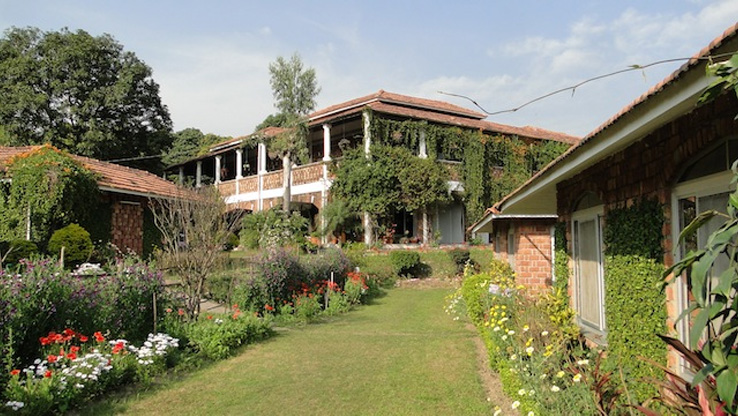
Swami Rama Sadhaka Grama :-
A wonderful place, situated at teh side of the holy Indian River Ganga. Constructed in a shape of a blissful meditation hill village, it has been established by Swami Veda Bharati in 2002. This is also the headquarters of the Association of Himalayan Yoga Meditation Societies International (AHYMSIN).
The organization`s activities and practices are rooted in the ancient meditation tradition of the Himalayas, representing 5000 years old lineage of Master. Indian texts, representing the most complete sort of Vedas, maintained and preserved in perfect form over the past 50 centuries, have been carefully studied and practiced under the guidance of Swami Veda.
Here, yoga is considered to be a trauscultural tradition rather than a modern cult. In yoga, as understood here, there is only one Guru. The golden egg. This golden egg represents the primordial energy of the manifestation, enabling all other gurus in a human form to channel this energy. Thus yoga tradition is not seen as a “style” but a form that is timeless and has been found also in other traditions in the words of Swami Veda: “I am a man of 21st century…..BC.”
At Swami Rama Sadhaka Grama, different styles of yoga are perceived as a sort of selection from the vast array of ways of practices that are in existence. Here yoga has been practiced as much as possible as a meditative experience. The main focus is therefore not on the body but on the changes and influences in the mind and the prana system.
The organization uses a brand for their activities and practices, calling themselves Pranavidya Hatha Yoga organization. Tradition of current practices consists of three main pillars:
- Yoga system as put forward in the sutras of Patanjali teaching mind to concentrate
- Vedanta and the systems of contemplation in non-dualistic approach
- Tantra where one tries to experience everything around us as divine
In conclusion, it has been pointed out that we are all different and on our own path. No matter how many ways there are to reach the peak of the mountain if we truly and sincerely want to reach it, we need to follow our own path, continue our sadhana and follow the chosen tradition. There is nothing wrong to be open-minded and aware of other paths as well as critically analyzing them. However, we are not to copy them and thus forget where we are standing and where we are supposed to go. At the end of the day we need to stick together and help each other to reach the peak, no matter which way we choose. None of these are right or wrong. They are just a path.